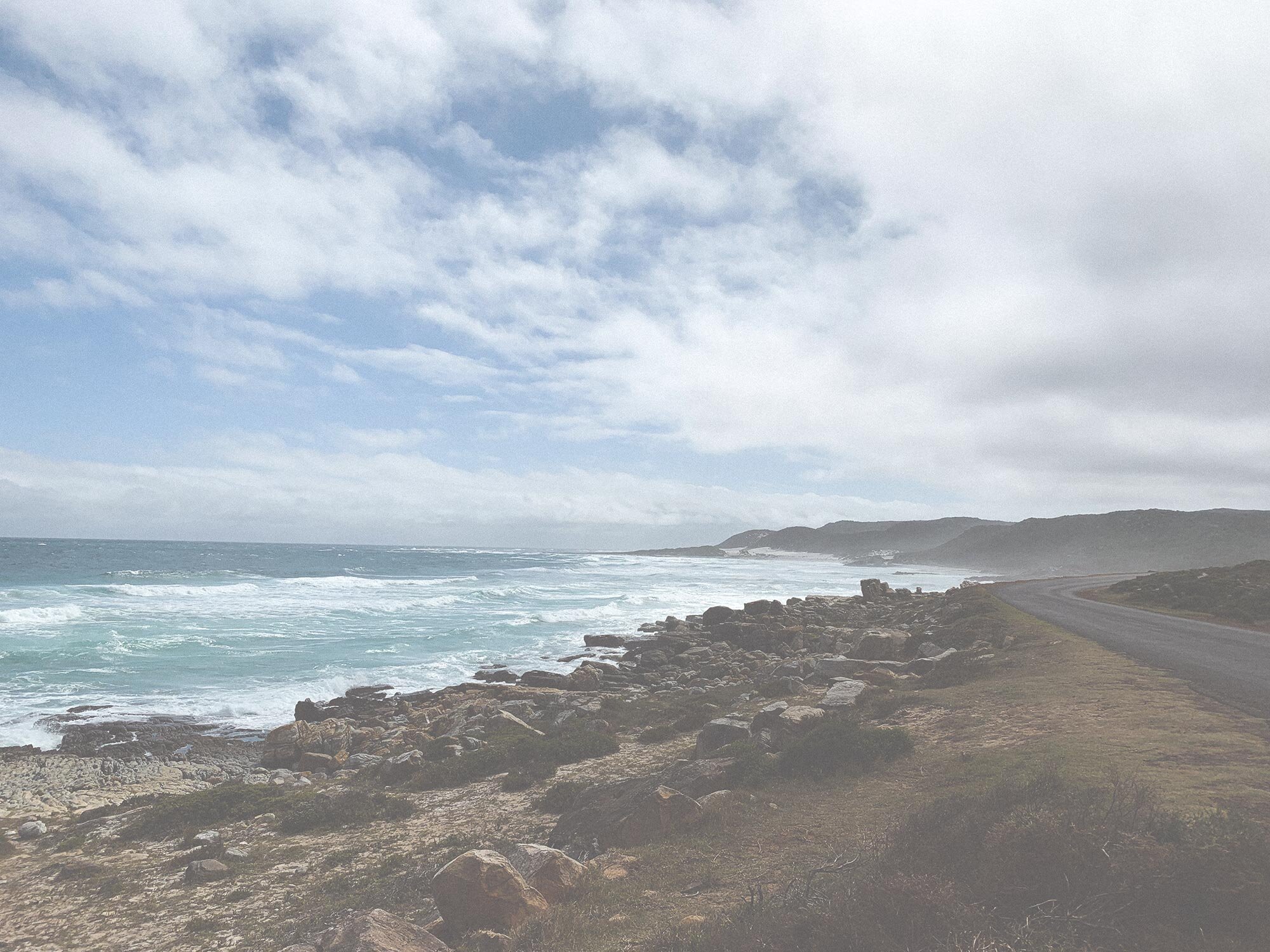
The Cape of Good Hope
Whenever you’re in South Africa for the first time, you should make sure to drive down to the Cape of Good Hope, which is probably one of the most famous attractions in Africa. At least, the southern tip of the Cape Peninsula with the melodious name has been commonly known even in Germany since the 2010 Football World Cup.
The Cape of Good Hope is located in the middle of the Table Mountain National Park, about 44 km south of Cape Town. The park itself covers the entire Cape Peninsula; hence the Cape is just a section in a greater heritage that is worth a visit on its own. However, you will drive through most of the National Park as both the M4 and the M65 drive through it. However, coming from Cape Town, there are two routes to take to the very south of the Peninsula:
1. The M6 that is a spectacular route, known as the Chapman’s Peak Drive or
2. the M3 or M4, passing the coastal towns of Muizenberg, St. James and Kalk Bay.
Either way, you should make a stop in Simon’s Town with its famous Boulders Beach that is home to a colony of penguins that you can visit and observe.
The name Cape of Good Hope was familiar to me, but I honestly did not know precisely what it meant so I will quote Wikipedia here:
>
“(…) a cape is a headland (…) of large size extending into a body of water, usually the sea. A cape usually represents a marked change in trend of the coastline which makes them prone to natural forms of erosion, mainly tidal actions.”
The Cape of Good Hope, in that sense, represents the most southern point of the Cape Peninsula. The high and steep cliff offers a great view of the bay while the rocky landscape extends underwater and far out to sea.
Most of the rocks are only just below the water surface, creating a unique, rugged coastal landscape. This is one of the reasons why monster waves are very likely to occur at the Cape of Good Hope. In addition, the jagged rocks below the sea surface and the strong winds are also the reason for many casualties of sailors and shipwrecks scattered underwater off the Cape. Thus, the name is in itself misleading. In fact, the Cape was originally called Cabo das Tormentas („Cape of Storms“). It can only be guessed where the name change came from.
The Table Mountain National Park itself has been protected since 1939. In addition to the impressive coastal landscape, there are many other things to discover in the park: Over 1,100 plant species spread across the hilly landscape, much of which are rare and endemic. In addition, some sections of the park are the natural home of deep, indigenous Afro-temperate forests.
The animal world is also impressive: there is a variety of antelopes, zebras, baboons, various bird species, and even ostriches. There are also multiple reptiles, such as turtles and snakes. And during the whale season from mid-June to the end of October, humpback whales and sometimes even the rare orca can be observed from the coast.
The flora but also the animals are explicitly protected: Any interference with nature is strictly forbidden. Well, I wasn’t too sad to head into the car, when the ostriches appeared out of a sudden…
By the way, the Cape of Good Hope is not really the southernmost, but the most southwestern point of Africa. The southernmost point is instead Cape Agulhas, the place where the passage into the Indian Ocean begins.
— If this article helps you travel, please book your trip via the links on this page or through the banner in the sidebar. This will earn me a small commission at no extra cost to you. Thank you for your support!

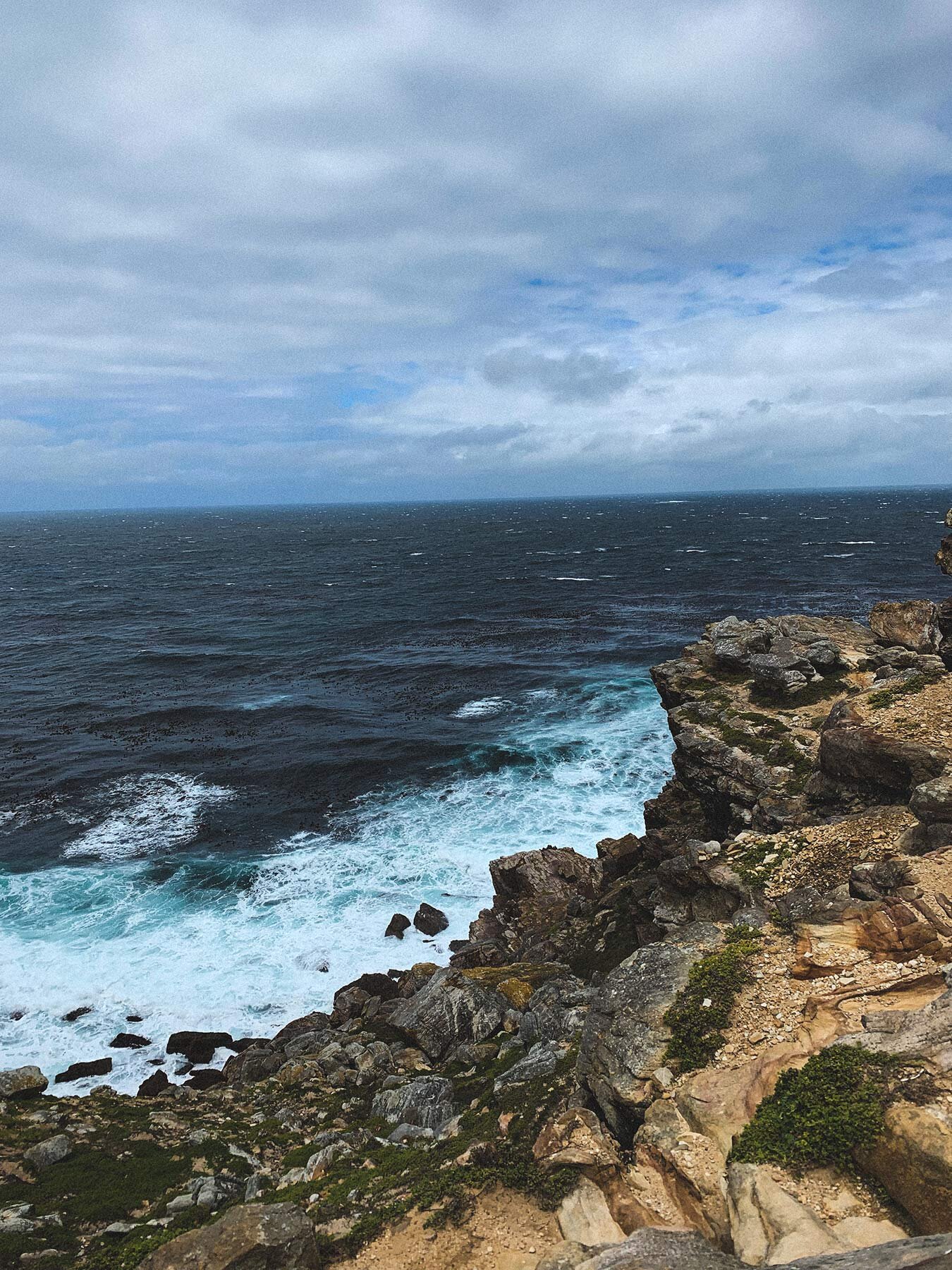
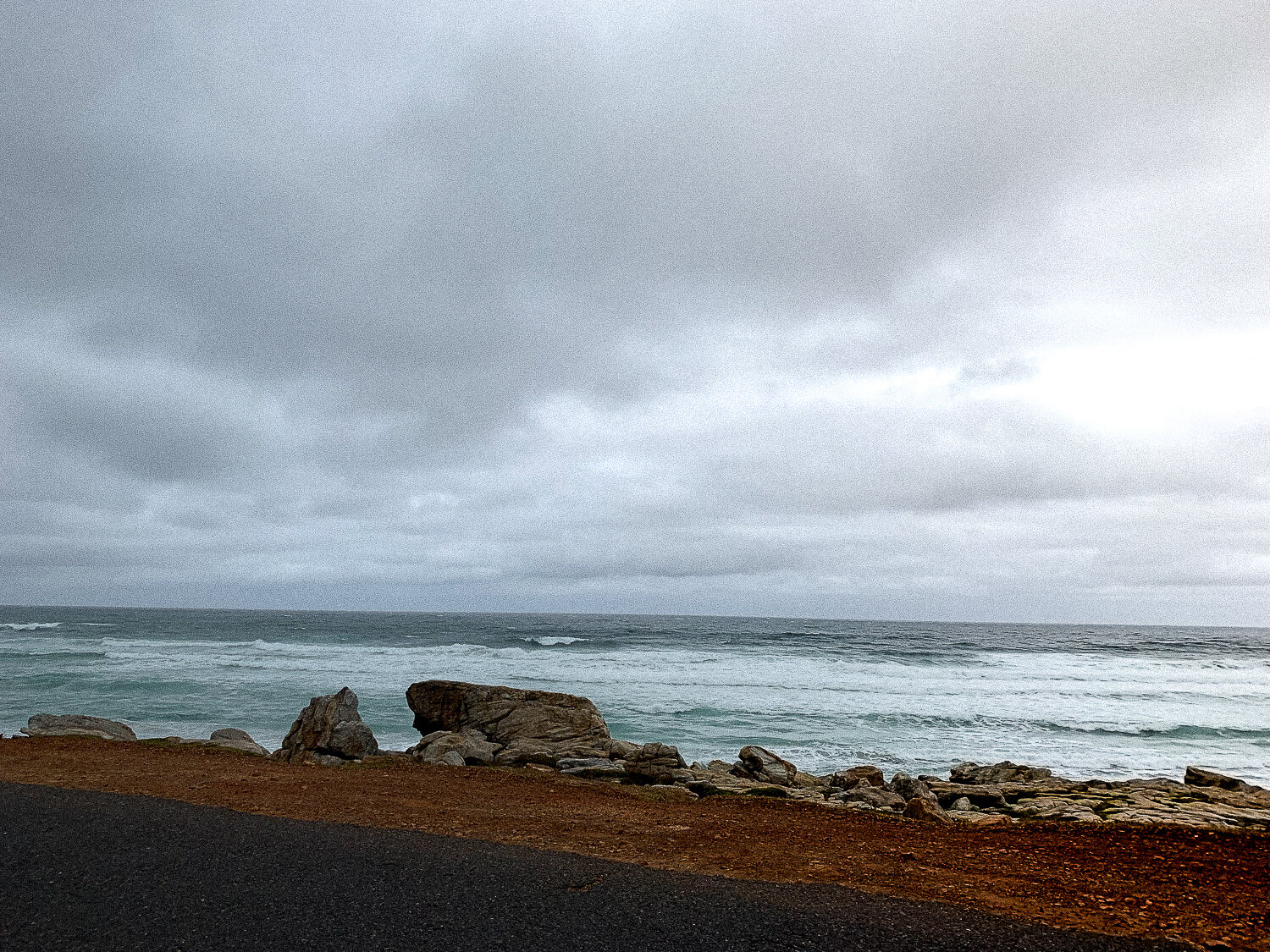

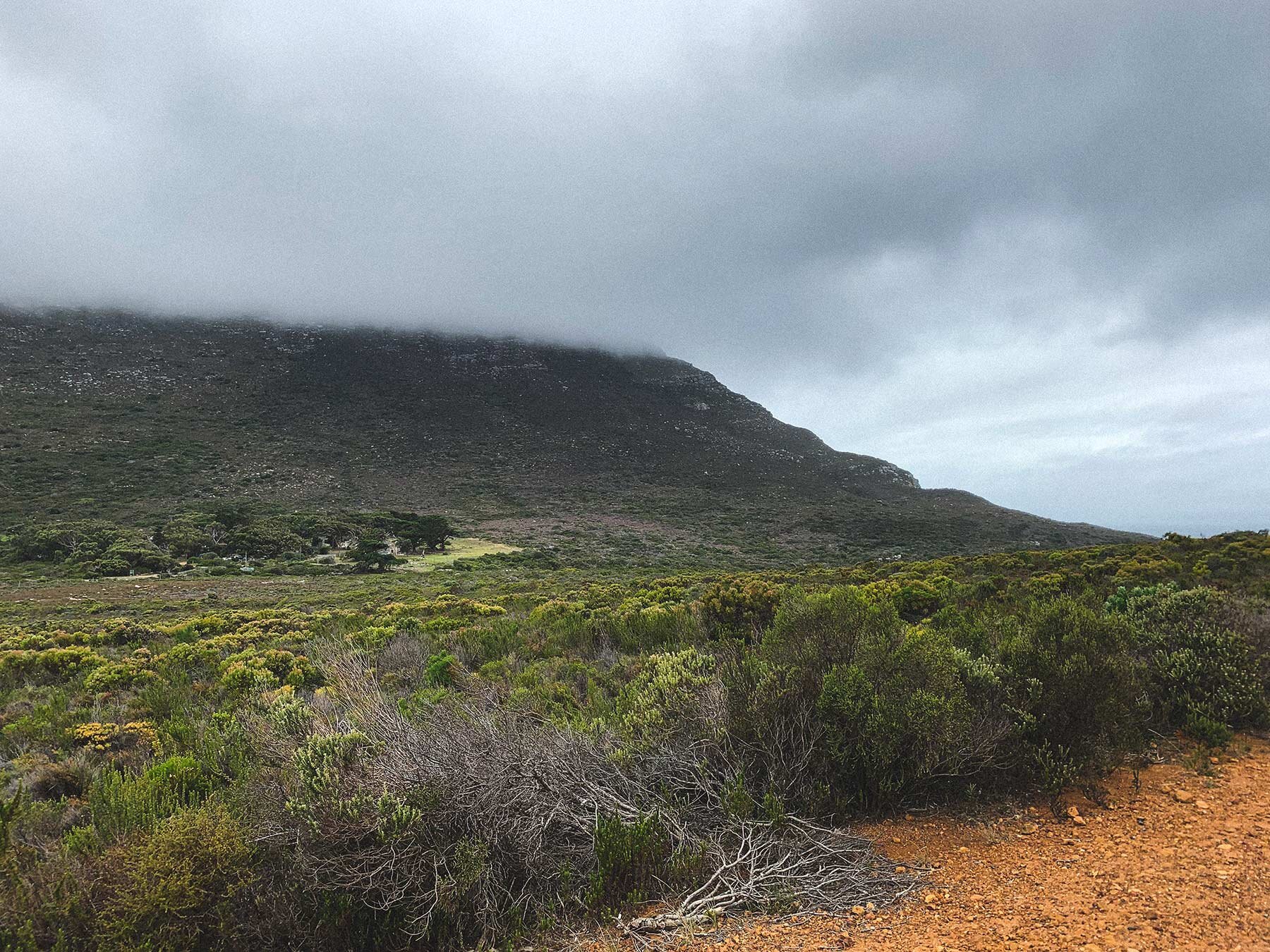

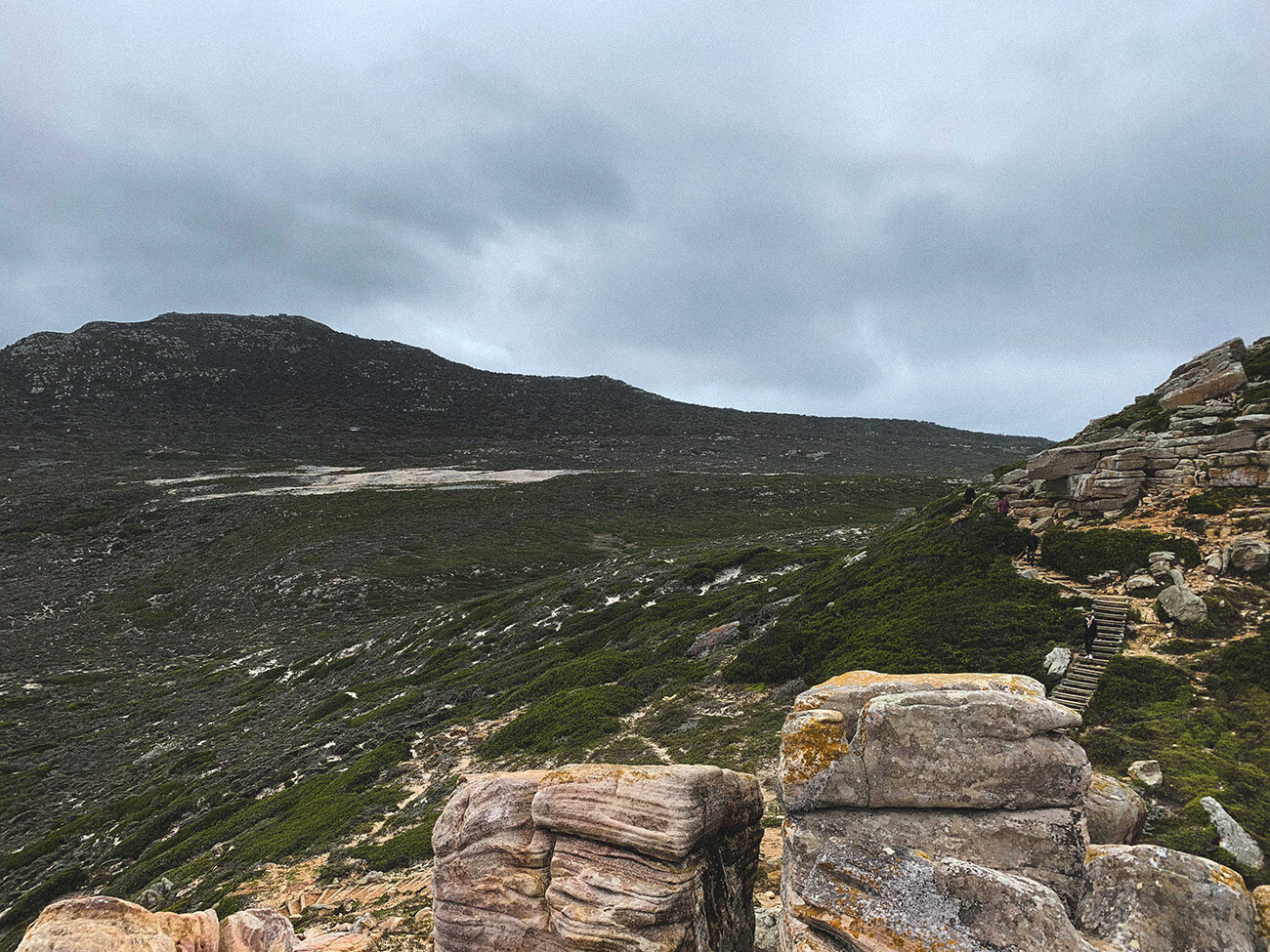
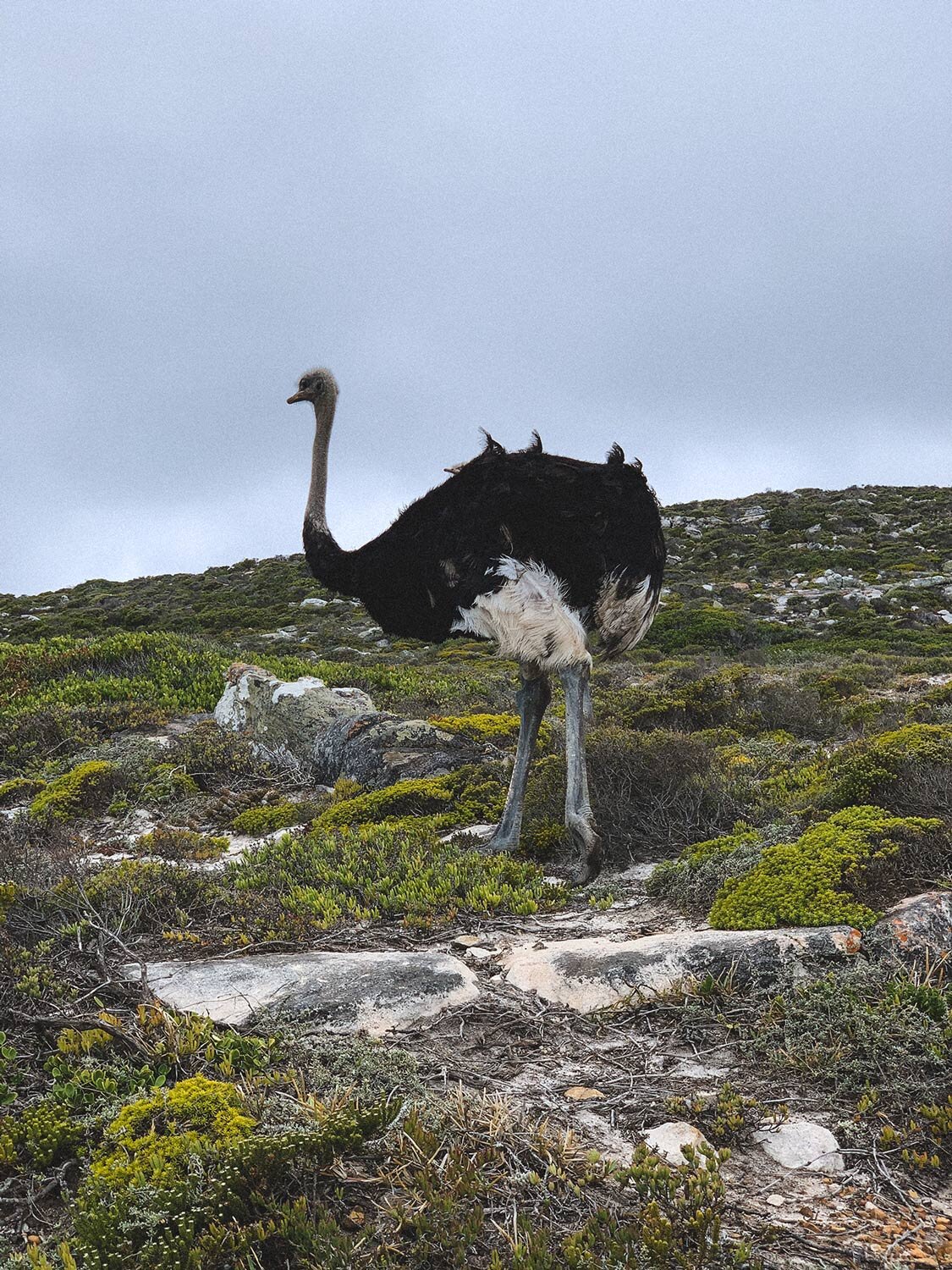


POST COMMENT